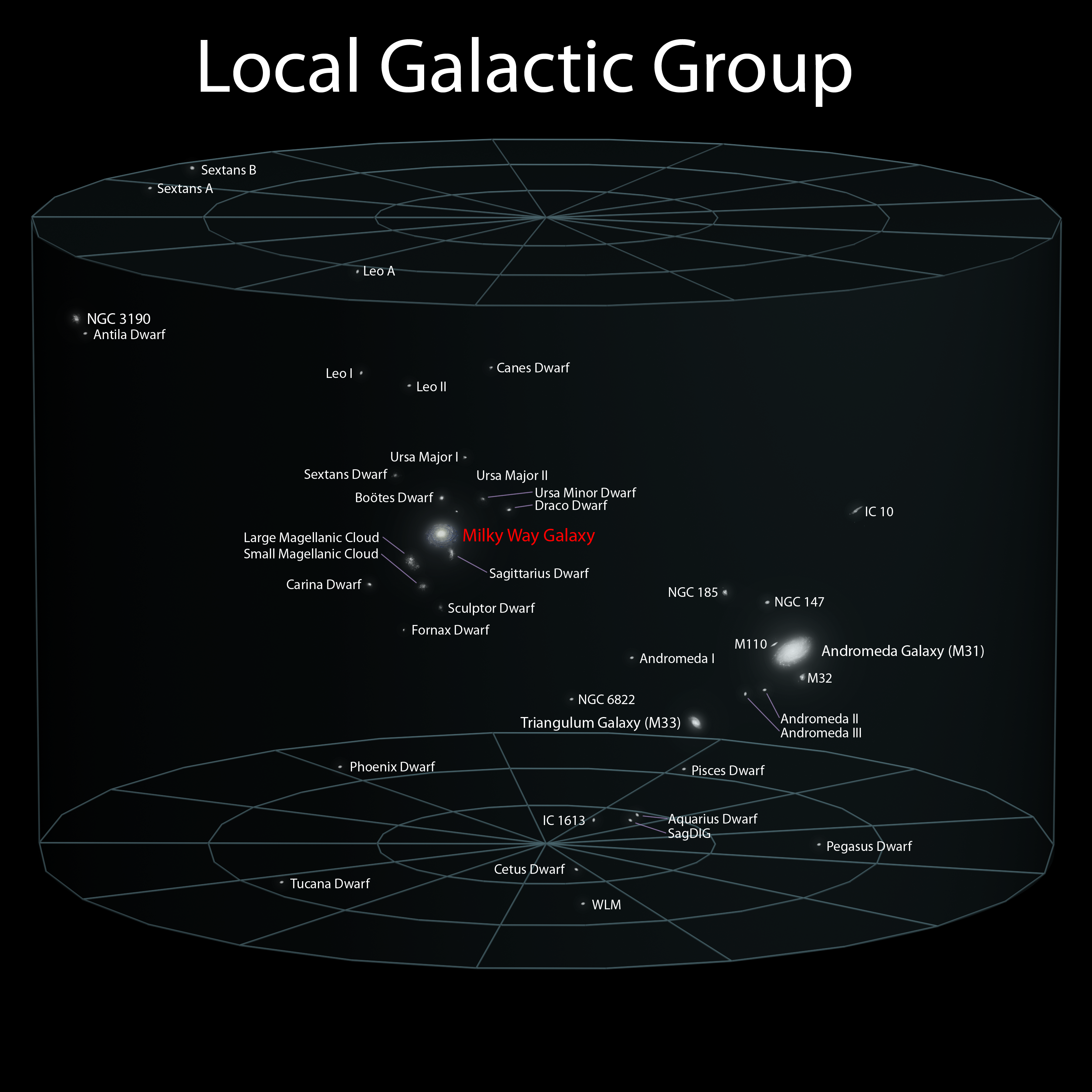
The Milky Way does not live alone -- it
has a number of "satellite" companions which orbit around
the Milky Way at distance of 10 - 100 kpc, and it also lives
with 2 other spiral galaxies in a galaxy group known as the
Local Group.

|
|
|
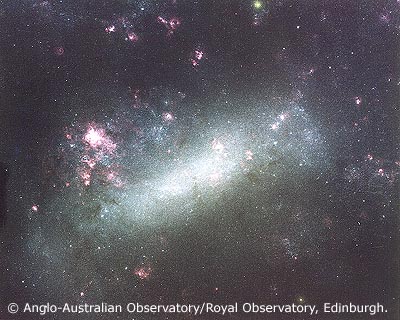 |
 |
|
|

Image source: Nidever et al & Mellinger, via APOD
An estimate of their orbit around the Galaxy suggests it
may have a semimajor axis a=125 kpc and an orbital period of a
few billion years (Gyr).
Question:
Why is the orbit of the Magellenic Clouds so hard to
figure out?
The Sagittarius Dwarf
| In
1994, a survey of stars in the direction of the
galactic bulge identified a group of stars with
similar distances and kinematics -- the discovery of
the Sagittarius dwarf galaxy.
The Sag dwarf is on the
opposite side of the Galaxy (behind the bulge), and
is being
ripped
apart by the gravitational tidal field of the
Galaxy. Each time it orbits the Galaxy, more stars
are ripped off...
|
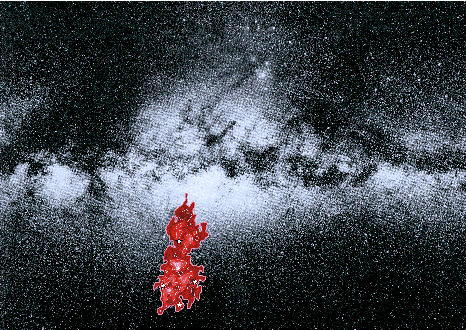 |
There are a good number of dwarf galaxies in
total orbiting the Milky Way.
Dwarf
Spheroidals
|
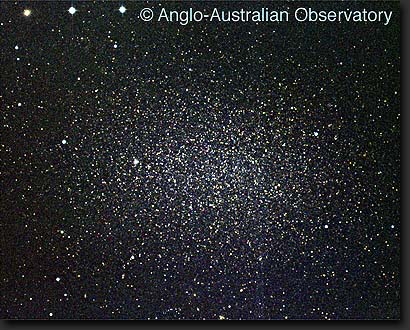 Leo I, a dwarf spheroidal |
Dwarf
Irregulars
|
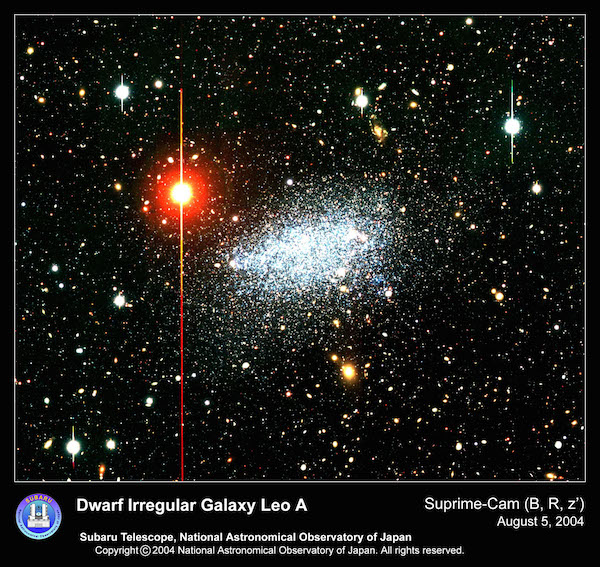 |
| Ultrafaint
Dwarfs In the past 10 years, a number of extremely faint dwarf galaxies have been found around the Milky Way: the ultrafaint dwarfs (from Bullock 2010): What makes a ultrafaint galaxy different from a star cluster? |
 |
Besides the array of dwarf companions,
there are two nearby spirals, the Andromeda Galaxy (M31) and
the Pinwheel Galaxy (M33). The three spirals -- the Milky
Way, M31, and M33 -- and their dwarf companion galaxies make
up the Local Group.
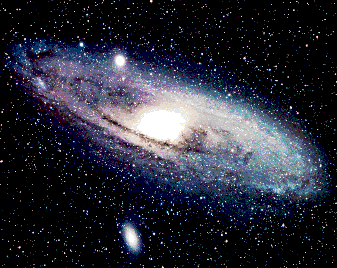 |
 |
|
|

